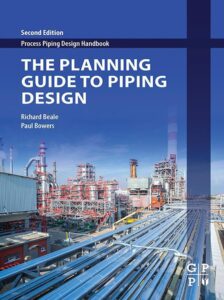The planning guide to piping design
The planning guide to piping design
The Planning Guide to Piping Design, Second Edition, covers the entire process of managing and executing project piping designs, from conceptual to mechanical completion, also explaining what roles and responsibilities are required of the piping lead during the process. The book explains proven piping design methods in step-by-step processes that cover the increasing use of new technologies and software. Extended coverage is provided for the piping lead to manage piping design activities, which include supervising, planning, scheduling, evaluating manpower, monitoring progress and communicating the piping design. With newly revised chapters and the addition of a chapter on CAD software, the book provides the mentorship for piping leads, engineers and designers to grasp the requirements of piping supervision in the modern age.
You can also Read Plastic Part Design. An Introduction
The planning guide to piping design Content
- 1.1. Introduction —
![The planning guide to piping design]()
- 1.2. Standards —
- 1.3. Specifications —
- 1.4. Procedures —
- 1.5. Piping Execution Plan —
- 1.6. Conclusion —
- 2. CAD and Design Automation in Piping Design —
- 2.1. Introduction —
- 2.2. Overview of Technology —
- 2.3. Software Support —
- 2.4. Other Considerations —
- 2.5. Training —
- 2.6. Emerging CAD Technologies —
- 2.7. Challenges
- Procedures
- Deliverables
- Detailed Design
- 6. Shop Fabrication —
- 6.1. Introduction —
- 6.2. Kick-Off Meetings —
- 6.3. Scopes of Work (SOWs) —
- 6.4. Instruction to the Spooling Fabricator —
- 6.5. Requests —
- 6.6. Visits With the Contractors —
- 6.7. Automatic Spool Generation —
- 6.8. Conclusion —
- 7. Field Construction —
- 7.1. Introduction —
- 7.2. Support From the Home Office —
- 7.3. Support in the Field —
- 7.4. Lessons Learned —
- 7.5. Safety.
In order to execute the piping designs of a project efficiently, it is essential that you initially identify and address all of the prerequisites that must be in place for the piping designers to start work. In order to do this you must first recognize all the questions that must be asked and answered, assemble all the needed tools, and make decisions accordingly. As you progress in your career you will find that this ability is required for any project, and that the best piping leads are those who can create missing tools when the need arises.
Download


Comments are closed.